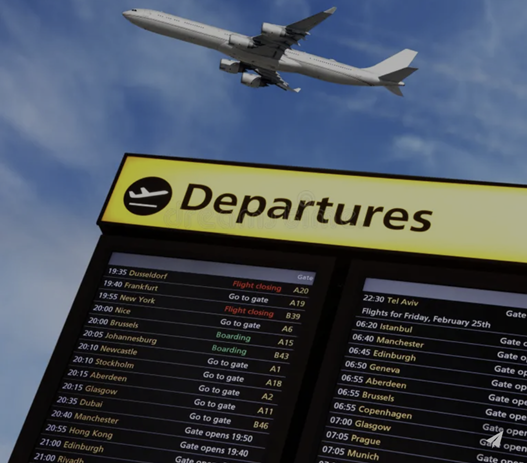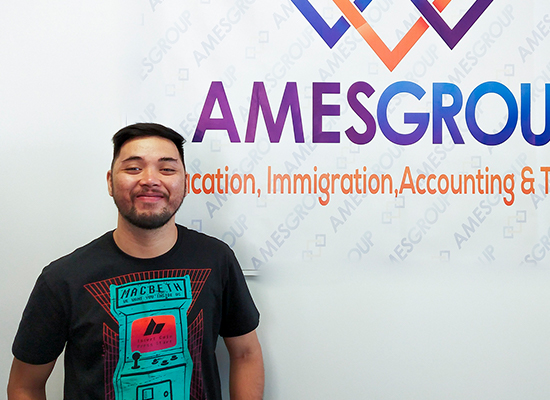New English Language Tests Accepted for Australian Visas

The Australian Department of Home Affairs has announced an update to the accepted English language tests for visa applications, offering more choices for individuals aiming to live, work, or study in Australia. This is a positive development, providing our clients with greater flexibility in meeting the necessary English language requirements. For tests taken on or […]
Emergency Travel: Navigating Unforeseen Journeys Home

Life can be unpredictable. Sometimes, urgent situations arise that require immediate travel, often to return to your home country or be with loved loved ones. These “emergency flights” or “compassionate flights” are not commonly discussed, but knowing how to navigate them can make an incredibly difficult time a little less stressful. At Ames Group, we […]
Navigating the New PTE Exam Landscape: Key Changes for Australian Test-Takers (Especially in Listening!)

The Pearson Test of English (PTE) Academic is undergoing significant updates, with new changes set to take effect from August 7, 2025. For anyone planning to take the PTE in Australia, understanding these modifications is crucial for effective preparation and achieving your desired scores. These enhancements are designed to better assess real-world communication skills, ensuring […]
Content Creators, Don’t Miss Out! Your Essential Guide to Australian Tax Deductions

Hey there, fellow content creators! We know your passion lies in crafting amazing videos, captivating images, or writing engaging stories. But let’s be honest, the world of tax can feel like a whole different universe. Whether you’re a full-time employee creating content for a brand (TFN), or a dynamic freelancer running your own show (ABN), […]
Your Australian Dream Job Awaits: Top Professions for Visa 189 (and How to Get There!)

Dreaming of a life Down Under? Australia’s Skilled Independent visa (subclass 189) is a highly sought-after pathway to permanent residency for skilled professionals. If you’ve been calculating your points, you know that meeting the minimum threshold of 65 points is just the first step. To truly boost your chances of receiving an invitation, understanding which […]
Job Hunting in Australia? How to Spot a Scam and What a Real Offer Looks Like!

Australia offers incredible opportunities for international students and temporary residents seeking work experience and a pathway to their career goals. However, as with any job market, it’s crucial to be aware of potential scams that target eager job seekers. Falling victim to a job scam can lead to financial loss, identity theft, and significant stress. […]
Heading: Leaving Australia? Don’t Forget Your Super! A Guide to Claiming Your Departing Australia Superannuation Payment (DASP)

Many temporary residents who work in Australia accumulate superannuation (retirement savings) during their time here. As you prepare to embark on your next adventure, whether returning home or moving to a new country, you might be wondering: “What happens to my super?” The good news is that eligible temporary residents can claim their superannuation as […]
Kickstart Your Aussie Career: Essential Licenses for Overseas Students

Australia offers a fantastic environment for overseas students, not just for world-class education but also for gaining valuable work experience. However, to step into many roles, especially in sectors like hospitality, construction, childcare, and trades, you’ll need specific Australian licences or certifications. Understanding these requirements early can significantly boost your employability and ensure you’re working […]
Unpacking Your IELTS Results: How to Request a Detailed Breakdown

Taking the IELTS exam is a significant step for many, especially those aspiring to live, work, or study in Australia. Understanding your overall band score is crucial, but sometimes you might want a more granular view of your performance in each section. Did you know you can actually request a breakdown of your IELTS results? […]
How to Appeal a Student Visa Refusal in Australia (ART): Proving You’re a Genuine Student

Was your Australian student visa refused? A visa refusal can be a disappointing setback, but it’s important to remember that you have the right to appeal. Through the Administrative Appeals Tribunal (AAT), also known as ART, you can present your case and potentially overturn the refusal. While the appeals process may seem daunting, the key […]
